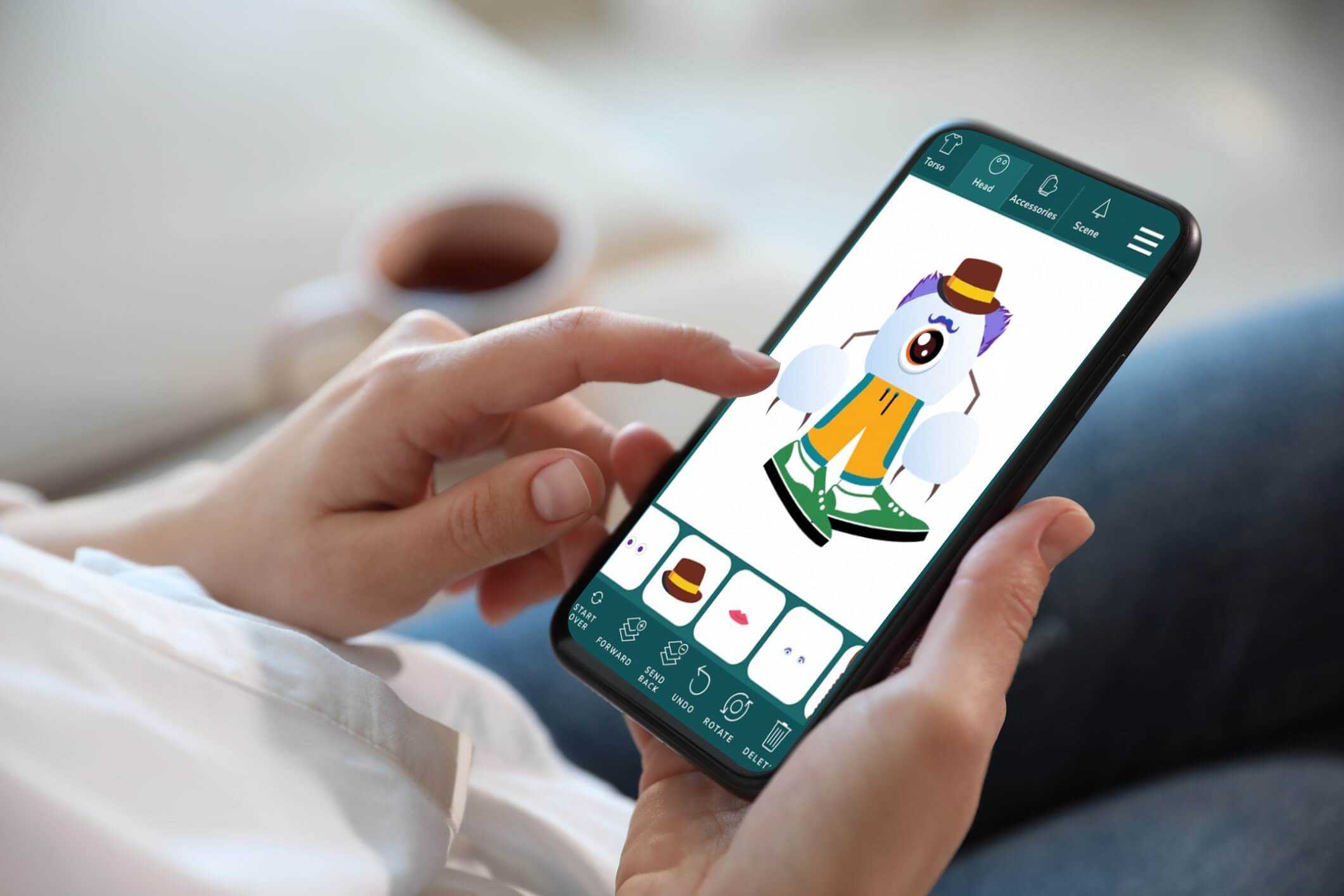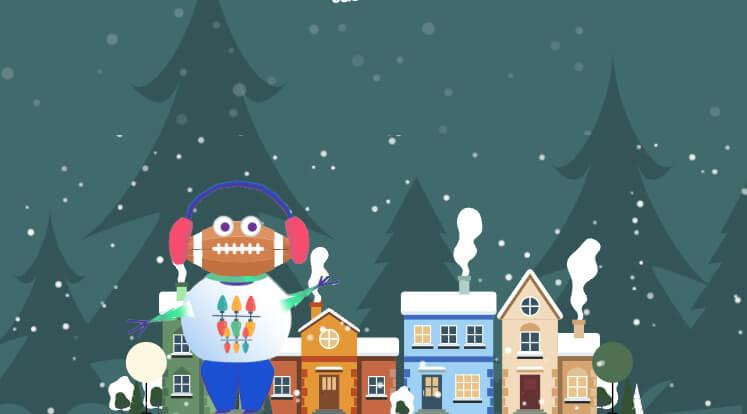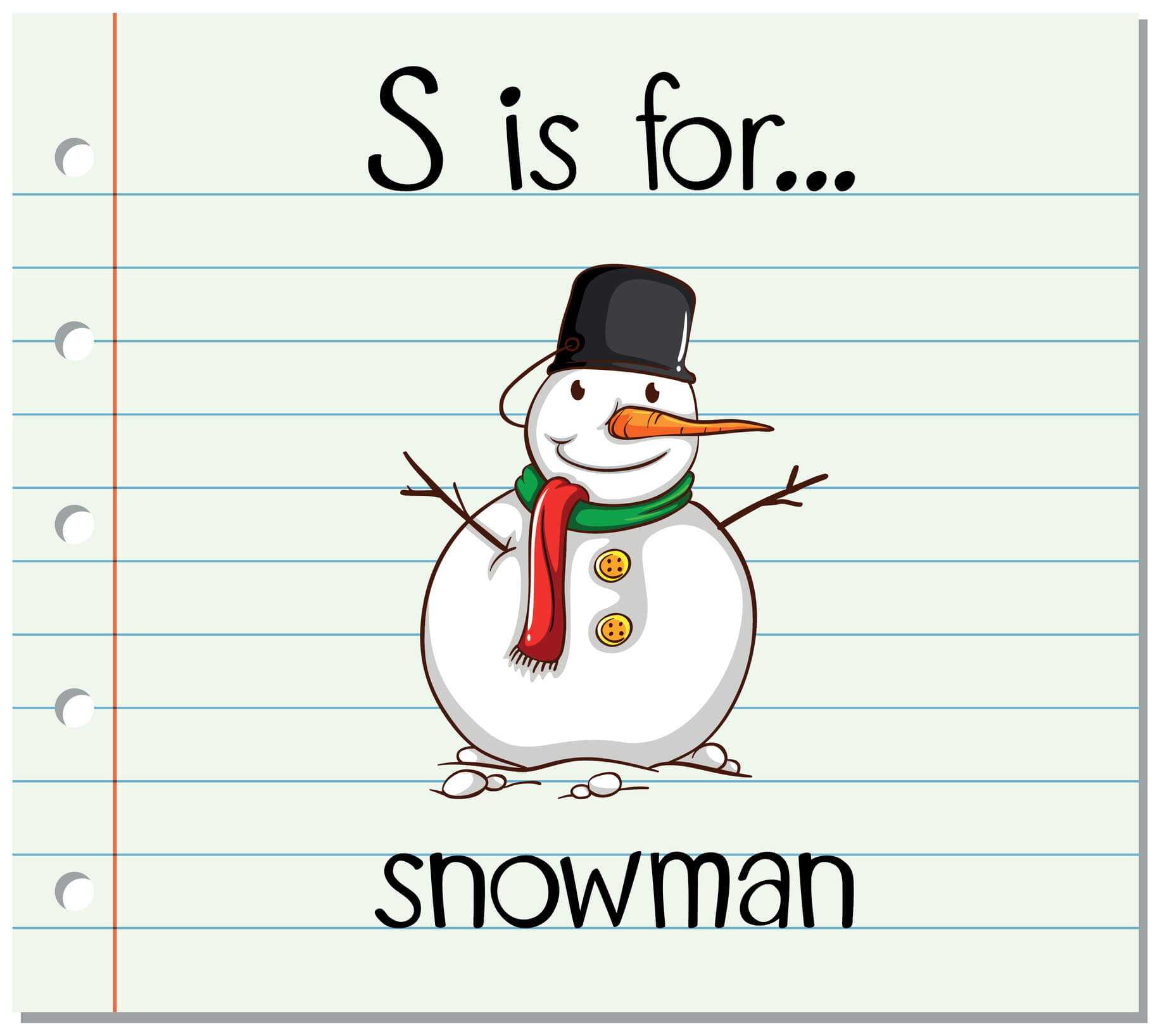

Interactive Snowman Builder Blends Fun, Learning, and Creativity
Building a snowman is more than just a winter pastime – it’s an opportunity to spark creativity, critical thinking, and teamwork in a fun, hands-on way.
With the DBS Interactive Snowman Builder, parents, educators, and homeschoolers can transform this timeless activity into a hands-on learning experience that encourages iteration, collaboration, and real-world connections. All without any costs or intrusive ads, accessible and free for anyone to enjoy.
Families and teachers in the classroom can take the classic snowman-building concept to new heights with this user-friendly experience, encouraging students to explore creativity, storytelling, math, art, and engineering. The platform is optimized for mobile devices, in addition to desktop or laptop computers.
Snowman Building Becomes a Lesson Plan
The beauty of snowman building lies in its simplicity, which sparks creativity and conversations. Whether you’re introducing young learners to the joy of creating shapes and images for stories or challenging older students with more complex design and engineering principles, a lesson plan involving the interactive snowman builder offers something for every learner.
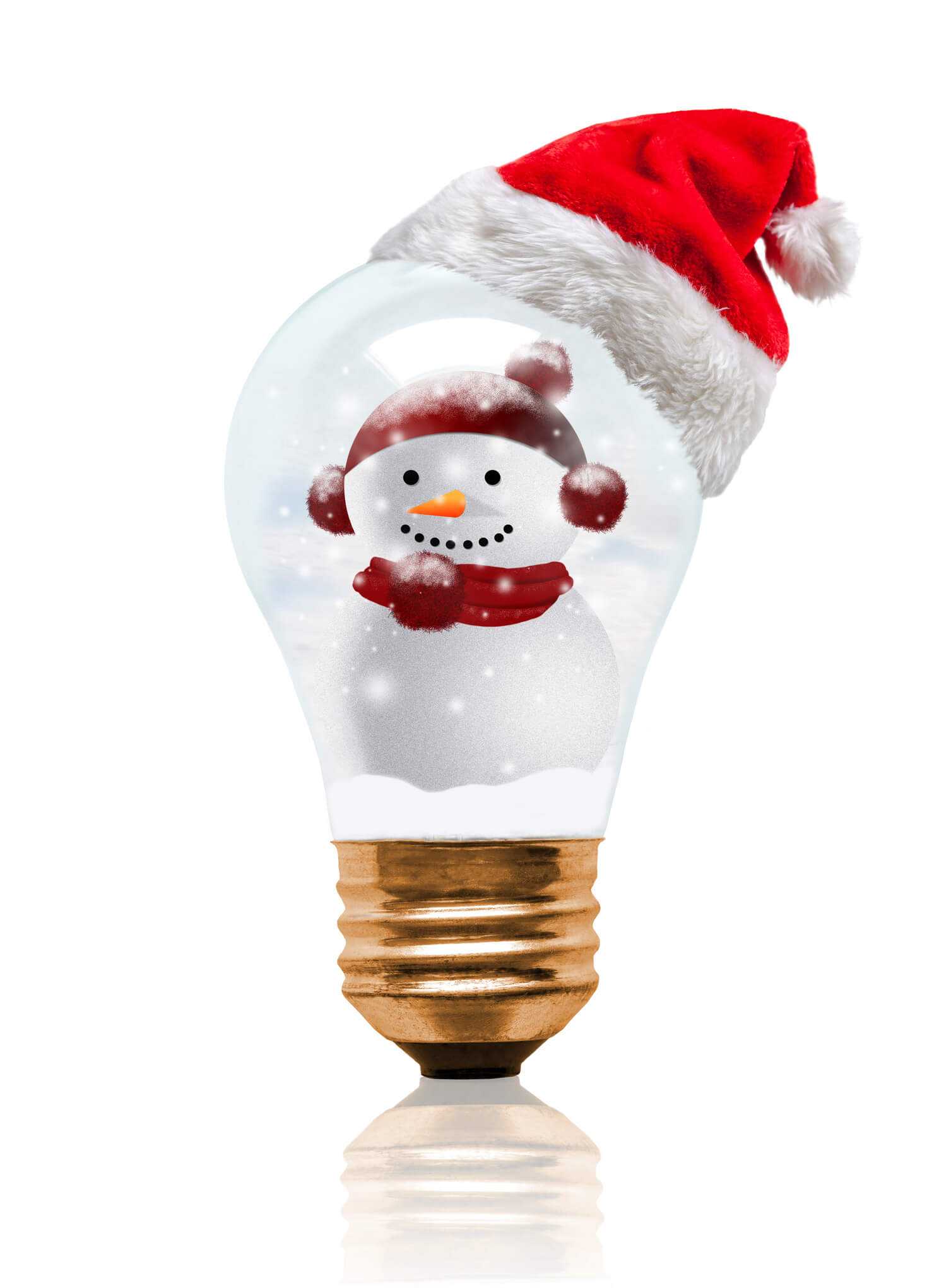 By balancing imagination with problem-solving, students gain practical skills while having fun.
By balancing imagination with problem-solving, students gain practical skills while having fun.
From imaginative writing to hands-on math problems, each activity is crafted to encourage iteration, collaboration, and real-world connections.
So, grab your imagination (and your mobile device), head over to dbswebsite.com/happyholidays, and dive into these lesson ideas that will help make your snowman-building session as educational as it is fun!
Whether crafting a story around a unique snowman character, designing symmetrical patterns, or tackling engineering challenges, these activities highlight how creative tools can inspire meaningful learning.
First, Some Frigid Facts about Snowmen
Before diving into the lesson plans, let’s start with some real-world snowman facts spanning history, science, and art:
- Best Temperature for Building a Snowman: 30-32°F is ideal for creating a sturdy snowman.
- Tallest Snowman Ever Built: Olympia Snowwoman stood an incredible 122 feet tall!
- Most Snowmen Built in One Hour: 2,036 snowmen were crafted in Japan in February 2015.
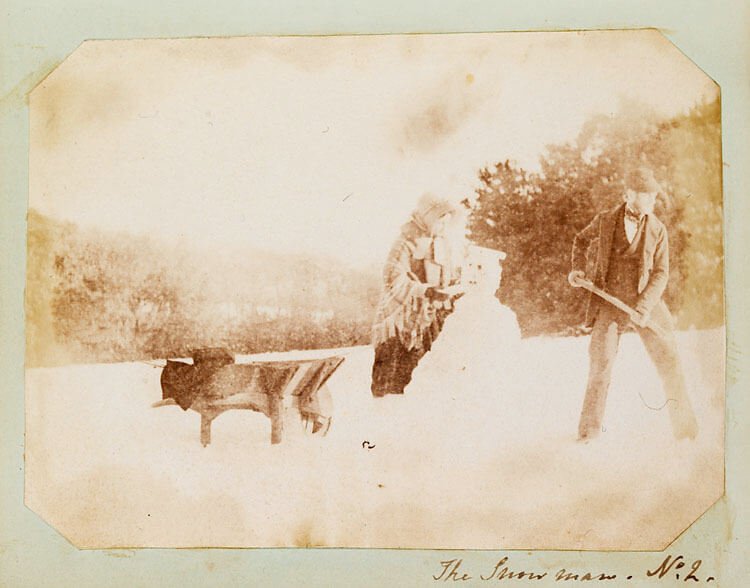 How Many Snowflakes in a Snowman?: It takes an estimated 58-61 million snowflakes to bring one snowman to life.
How Many Snowflakes in a Snowman?: It takes an estimated 58-61 million snowflakes to bring one snowman to life.- Snowman Traditions: In Zurich, Switzerland, spring is celebrated by blowing up a giant snowman known as the Bӧӧgg.
- Who’s a Famous Snow Sculptor?: Even Michelangelo got in on the snowman fun, sculpting one in 1494.
- Earliest Known Photo of a Snowman: An 1853 photo on display at The National Library of Wales.
- Calorie Counting: Building a snowman burns about 240 calories an hour.
- Snowball Diameters Matter: According to Industrial Engineer, the ideal snowman maintains a size ratio of 3:2:1, with a 3-foot base, 2-foot middle, and 1-foot top sphere for optimal proportions.
- Are You Afraid of Snow?: If you’re suffering from “chionophobia,” you have an irrational fear of snow.
Mixing Fun with a Dash of Learning
By blending creativity with practical skills, these lessons engage students in meaningful, hands-on learning experiences beyond the classroom. From early learners to older students, there’s something for everyone, making snowman-building a versatile educational activity.
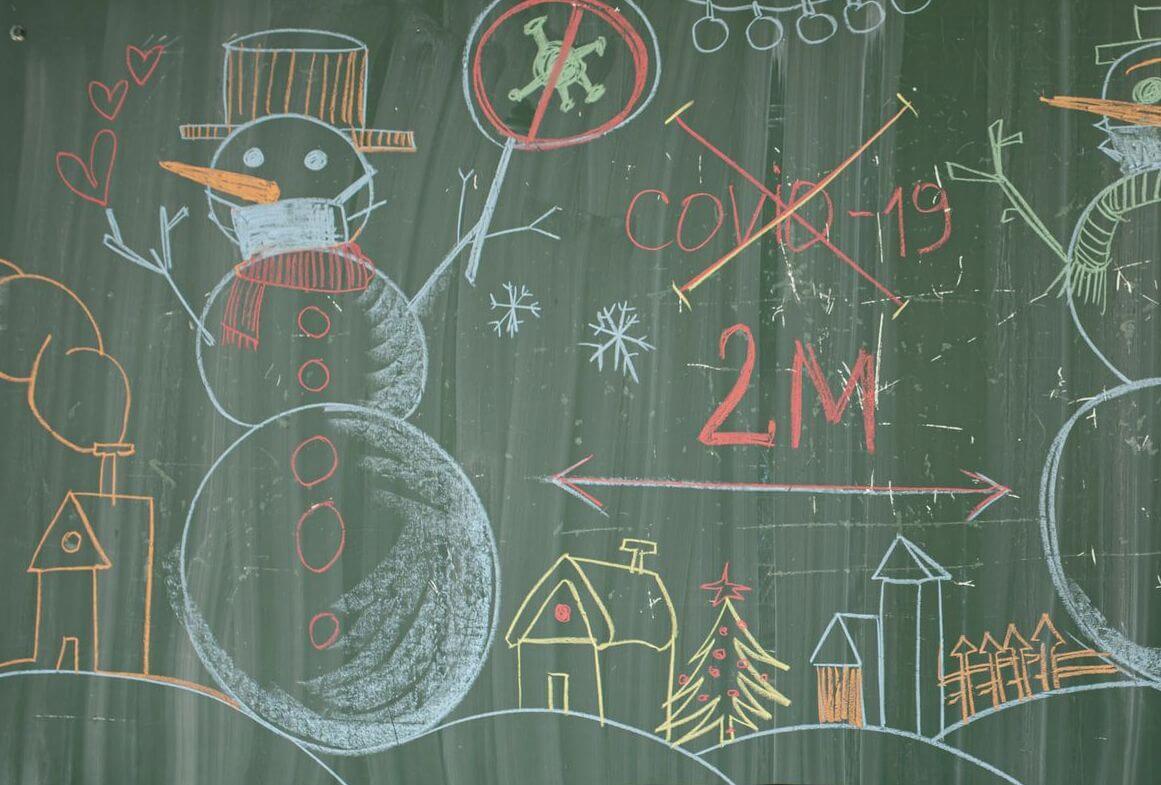 With snowmen as a playful backdrop, these lesson plans integrate creativity and problem-solving to foster student learning in exciting new ways.
With snowmen as a playful backdrop, these lesson plans integrate creativity and problem-solving to foster student learning in exciting new ways.
To offer a richer experience from the Snowman Builder, we invited a veteran teacher, Marian Foster, to produce an innovative lesson plan incorporating the DBS Interactive Snowman Builder. Her experience and creative approach to education made her the perfect choice to demonstrate how interactive tools can enhance student learning.
The lesson plan highlights the Snowman Builder's educational benefits and showcases how technology can be integrated to engage and inspire young minds.
About Marian Foster: Marian Foster is a seasoned educator who has dedicated her career to supporting children with learning differences and delays. She teaches at an elementary school in the Jefferson (Kentucky) County School System. With a Master's of Arts in Teaching, specializing in Learning and Behavior Disorders, and a Bachelor's in Social Work, she brings expertise and compassion to her role.
Build a Snowman Primary Lesson Plan
Literacy Principle: Students will integrate and evaluate content presented in print and non-print forms of text found in diverse media and formats.
Download this free lesson plan
| Activity | Details |
|---|---|
| Warm Up | Move to the group circle and review expectations. Re-read familiar words and discuss the concept of snow and snowmen. |
| Phonological Awareness | Use oral practice and hand movements to demonstrate combining two words to form a compound word. Examples: snowman, snowflake, snowfall, snowstorm, snowball. |
| Shared Reading | Introduce Snowmen at Night by Caralyn Buehner. Discuss characters, setting (neighborhood, night, winter), and main idea: What do snowmen do at night when no one is watching? |
| Response to Reading | Use the DBS Build Your Snowman website to build snowmen digitally or as a class. Add personalized details and write each student’s name by their snowman. |
| Writing | Students write a sentence using the stem: My snowman will ______ at night. Examples: My snowman will wear glasses at night. / My snowman will wear a tutu at night. |
| Writing Extension | Extend writing activities by sending cards from the snowman builder, taking sentence dictations, writing about a favorite part, or exploring problem/solution narratives. |
Build a Snowman Upper Elementary Group Lesson Plan
Literacy Principle: Students will use digital resources to create and publish products and interact and collaborate with others.
Progression C.2.4, C.3.4, C.4.4: With guidance, use digital resources to create and publish products collaboratively.
Download this free lesson plan
| Activity | Details |
|---|---|
| Warm Up (5 minutes) | Students sketch a snowman and add five details. Partners exchange sketches and add one more detail to each other’s drawings. Adapt for individual needs. |
| Create Visual Representation | Use the DBS Build Your Snowman website to create a snowman based on both partner and individual ideas. Do not add a setting yet. |
| Paragraph Development | Use a graphic organizer to write a 5-sentence paragraph describing the snowman. Include details about color, style, body placement, fabric, and size. |
| Editing (2-3 minutes) | Students identify uncertain spellings and check punctuation. This is an initial check and a start for day 1. Discuss tricky words as a class. |
| Word Review | Review tricky words in a group setting. Use methods such as sound boxes and the heart word method for reteaching as needed. |
| Closing Exercise | Explore scene and setting options on the DBS Build Your Snowman website. Encourage students to plan tomorrow’s writing activity: placing the snowman in a setting for a friend’s card. |
More Lesson Plans for Encouraging Creativity and Critical Thinking
At DBS, we have developed a series of additional lesson plans that incorporate our interactive Snowman Builder. These plans aim to harness the power of interactive content to foster creativity, enhance critical thinking, and make learning enjoyable for users of all ages.
From creative writing to math and art, each plan provides unique opportunities for students to explore concepts in a fun and interactive way. Each theme is customized for different age groups.
Creative Writing Lesson Plan: Building a Story
Preschool (Ages 3–5): Basic Character Creation and Storytelling
Objective
Students will create a unique character or scene by designing their snowman and writing a story based on it.
Activity
- Guide students to build a snowman or other character using the online tool. Encourage creativity, like adding funny hats or unique accessories.
- Ask simple questions about their snowman: “What’s their name? What do they like to do? Where do they live?”
- Help them create a short oral story about their character. For example, “This is Sunny the Snowman. He loves wearing sunglasses and lives on a sunny beach.”
Extra
- Have students draw their character and describe it with a few words (e.g., happy, silly, kind).
- Create a group story by having each student add one sentence about the class snowman.
Early Elementary (Ages 6–8): Developing Setting and Conflict
Activity
- After building their snowman or character, students write a simple story including a name, traits, and setting. For example, “Frosty loves snowboarding on tall mountains.”
- Introduce conflict and resolution: What problem does the character face, and how do they solve it? For example, “Frosty’s snowboard broke. How did they get down the mountain?”
- Use a worksheet to brainstorm descriptive words about their character and setting.
Extra
- Share their stories in pairs or small groups.
- Draw their character in the story’s setting and label key features (e.g., “mountain,” “snowboard,” “clouds”).
Upper Elementary (Ages 9–11): Character Traits and Narrative Structure
Activity
- Students create a snowman with a distinct personality (e.g., an adventurous snowman or a shy robot). Ask them to brainstorm traits like hobbies, fears, and goals.
- Write a story with a clear narrative structure: introduction, rising action, conflict, climax, and resolution.
- Encourage students to focus on vivid descriptions of the setting and character actions, such as “Sammy the Snowman’s scarf flapped as he sledded down the icy hill.”
Challenge
Develop a snowman or character with a deeper backstory or theme. For example, “What if your snowman is magical but must stay hidden?”
Mathematics Lesson Plan: Exploring Shapes, Symmetry, and Fractions
Objective: Students will identify and manipulate basic shapes, symmetry, and fractions through snowman-building.
Preschool (Ages 3–5): Shape Recognition and Basic Symmetry
Activity
- Introduce students to basic shapes: circle, triangle, and rectangle.
- Ask them to build a snowman by stacking circles (snowballs), adding a triangle hat, and placing rectangular buttons.
- Discuss which shapes they see and how they are used.
- Show them how to fold an imaginary line through the middle of their snowman to check for symmetry.
Extension
- Provide pre-cut shapes and have students sort them into categories.
- Play a game where students match identical shapes to reinforce symmetry.
Early Elementary (Ages 6–8): Symmetry and Simple Fractions
Activity
- Have students build their snowman and identify lines of symmetry (e.g., draw a vertical line down the center to see if both sides match).
- Discuss fractions by dividing the snowman into parts (e.g., the snowman has three circles, so each is 1/3 of the snowman).
- Use the snowman’s buttons to practice counting and arranging: “If there are 6 buttons, how many are on each section?”
Extension
- Encourage students to build their snowman symmetrically.
- Introduce the concept of halves by cutting shapes in half and discussing the fractions.
Upper Elementary (Ages 9–11): Exploring Area, Perimeter, and Complex Fractions
Activity
- Ask students to calculate the area and perimeter of the shapes used in their snowman. For example:
- Use formulas for circles (area = πr², perimeter = 2πr).
- Measure triangles and rectangles.
- Discuss symmetry and ask students to adjust their snowman to make it symmetrical if it’s not already.
- Explore fractions further by dividing the snowman into smaller sections and discussing equivalent fractions (e.g., 2/6 is the same as 1/3).
Challenge
- Build an asymmetrical snowman and describe how it’s different.
Extension
- Introduce basic geometry by discussing angles in the snowman’s arms or hat.
Art Lesson Plan: Color Theory and Design – Activities
Objective: Students will explore color theory, contrast, and artistic design principles by customizing their snowman or character.
Preschool (Ages 3–5): Introduction to Colors
Objective: Recognize and identify basic colors and their emotional associations.
Activity
- Guide children to decorate their snowman using primary colors (red, yellow, blue) and discuss each color's feelings or associations. For example, “Yellow is a happy color.”
- Encourage them to mix and match colors while decorating their snowman or adding features like hats, scarves, or backgrounds.
- Talk about warm colors (red, orange, yellow) versus cool colors (blue, green, purple) and what they might represent in the snowman’s “story.”
Extension
- Display their creations and have them describe their snowman in simple terms, such as “My snowman is blue because it’s a cold color.”
Early Elementary (Ages 6–8): Exploring Color Choices
Activity
- Teach students the basics of the color wheel and have them choose a specific color scheme (e.g., complementary like red and green or analogous like blue and green) for their snowman design.
- Discuss how different colors make the snowman feel. For example, “Does your snowman feel happy or serious with these colors?”
- Have them create a background with contrasting colors to make the snowman stand out.
- Write a sentence about why they chose their colors: “I used orange because it’s bright and cheerful.”
Extension
- Create a class chart of color emotions (e.g., red = excitement, blue = calm) and discuss how their snowman reflects those emotions.
Upper Elementary (Ages 9–11): Applying Color Theory
Activity
- Encourage students to experiment with symbolism. For instance, a snowman with green accents could represent growth or nature, while purple might evoke mystery or royalty.
- Discuss the relationship between tone (light and dark shades) and mood. How does adding black or white to a color change its impact?
- Encourage students to pair their design with a brief description of its story or setting and how the colors enhance the narrative (e.g., “My snowman in the desert uses warm colors to match the heat.”).
Extension
- Label their color choices and explain the mood they wanted to convey.
Critical Thinking & Problem-Solving Lesson Plan: Snowman Engineering
Objective: Students will practice engineering and problem-solving by creating structures using snowman parts.
Preschool (Ages 3–5): Introduction to Building with Parts
Objective: Practice basic problem-solving by constructing a simple snowman with creative variations.
Activity
- Provide children with printed or digital snowman parts (e.g., circles for the body, arms, hats, etc.).
- Ask them to build a "special snowman" to do something fun, like holding a balloon or waving a flag.
- Discuss what happens if parts are placed differently (e.g., "What if we put the arms lower instead of higher?").
Challenge
- Encourage teamwork by pairing students to combine ideas for their snowman design.
Early Elementary (Ages 6–8): Building Functional Structures
Activity
- Give students a specific task, like building a snowman that holds an umbrella or carries a backpack.
- Discuss balance and weight distribution. For example, “How can we make sure the umbrella doesn’t tip the snowman over?”
Challenge
- Host a class discussion: “What did you try that worked? What didn’t work, and how did you solve the problem?”
Upper Elementary (Ages 9–11): Designing for Function and Stability
Activity
- Assign small groups to design a snowman that performs a function, such as shielding another object or holding up a sign.
- Discuss engineering principles like weight distribution and support.
- Ask each group to explain their design decisions, such as “Why did you put the arm here instead of there?”
Challenge
- Have students document their process, including sketches and problem-solving steps.
As you wrap up your snowman adventures, remember that the lessons learned – teamwork, problem-solving, and imagination – are skills that last a lifetime. So, whether your snowman stands tall on a snowy hill or exists only in the digital realm, the joy and curiosity it sparks will warm hearts, even on the chilliest days.

